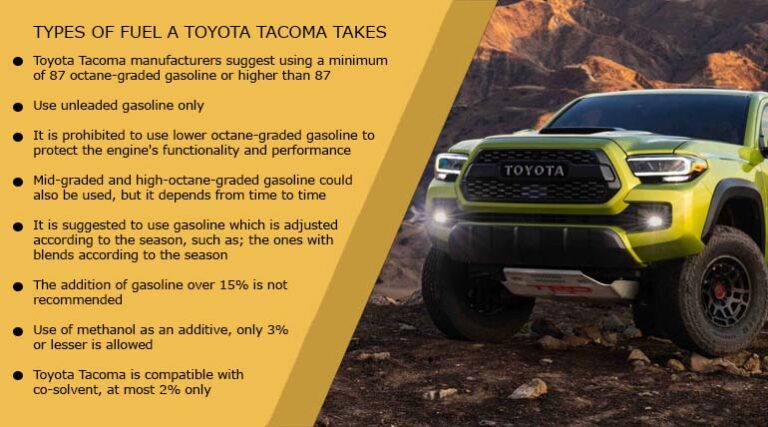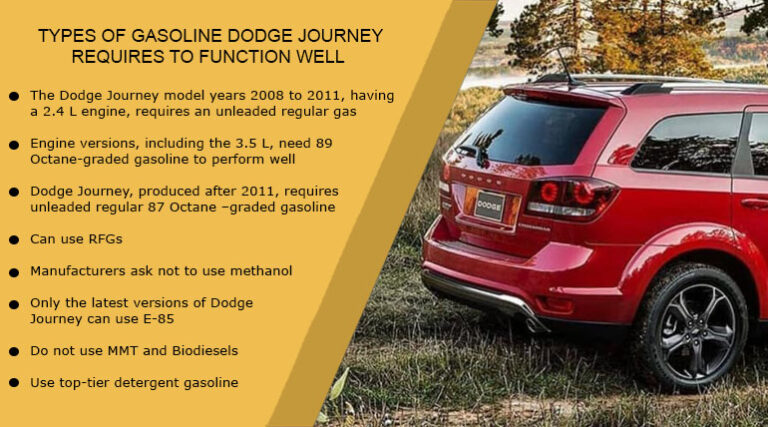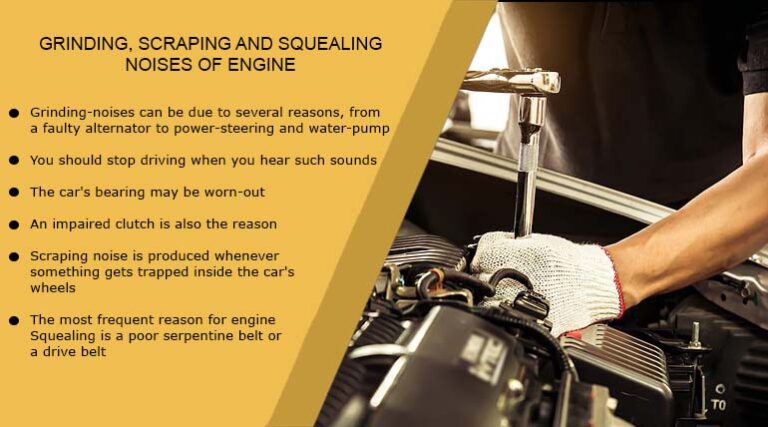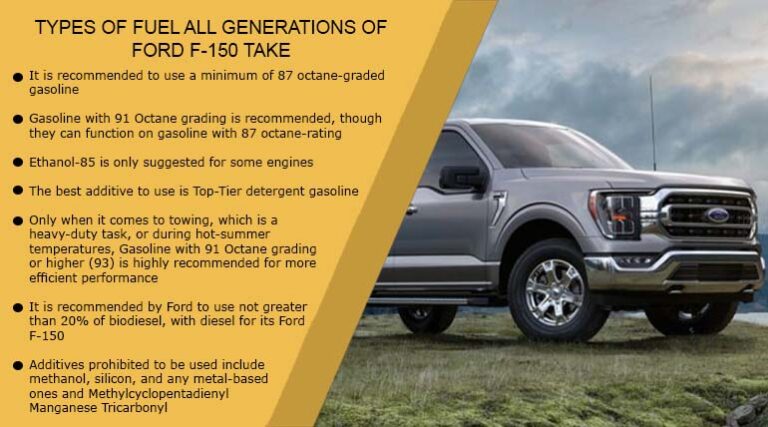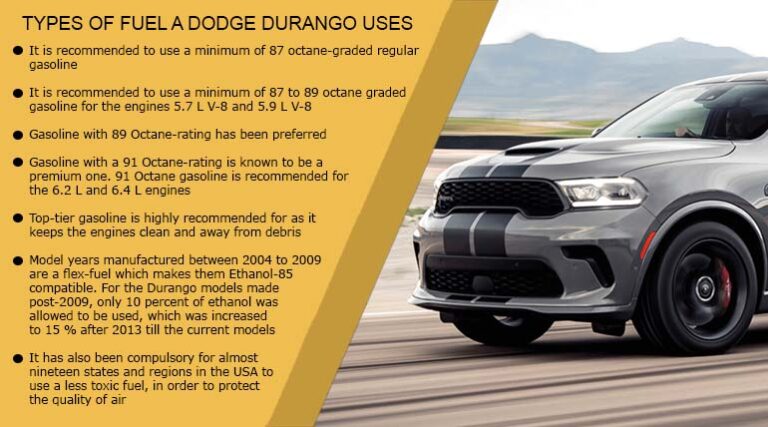Types of Gasoline All Generations of a Ford Escape Takes:
The Ford Escape, a beautiful luxurious SUV, was first produced in 2000 by the re-known automobile company Ford, with 2001 as the first year of the model in the market. It is currently in its 4th generation and is a mid-sized utility automobile. It is known to be one of the most famous compact crossovers, with style, remarkable in its technology, blending, and economy to be compatible with the lifestyles of Americans. This article will cover everything about the types of gasoline a Ford Escape takes.
A Brief Overview!
Let’s go through a brief overview of this article regarding the correct types of gasoline Ford Escape takes before jumping into the details;
To summarize, use a minimum of 87 octane-graded gasoline for all the models manufactured from 2000 to the current day. This includes the EcoBoost and hybrid engines. For the model produced since 2019 to consume premium gasoline with an octane rating of 91 for maximum performance. Especially when it comes to heavy-duty tasks such as towing and during scorching temperatures.
Types of Gasoline Ford Escape Takes (Explained)
By using the owner’s manuals of Ford Escape, all the data here concerning the correct type of gasoline for your Ford Escape has been well researched and collected to assist you.
Fuel Type Depending on Ford Escape’s Generation-wise Engines.
Based on your Ford Escape’s engine, the correct type of fuel is selected. Below are details regarding the engines offered by the Ford Escape’s model years and the compatible fuel type according to its specific generation, models, and engine.
Ford Escape – 1st Generation 2001 to 2007
According to the Ford Escape’s owner manuals, for the models manufactured between 2001 to 2007, it is recommended to use a minimum of 87 octane-graded gasoline (Regular, unleaded), even for the Ford Like EcoBoost and hybrid engines. Ethanol-10 (E-10) or less than 10% is allowed to be used in models manufactured between the years 2000 to 2011.
Ford Escape – 2nd Generation 2008 to 2012
According to the Ford Escape’s owner manuals for the models manufactured between 2008 to 2012, it is recommended to use a minimum of 87 octane-graded gasoline (Regular, unleaded). Ethanol-10 (E-10) or less than 10% is allowed to be used. Whereas the ones produced after 2012 are required to use 15 per cent ethanol (E-15). Only the models manufactured between 2008 to 2011 are flex-fuel, which means they can handle E-85.
Ford Escape – 3rd Generation 2013 to 2019
Ford Escape’s owner manuals for the models manufactured between 2013 to 2019 recommend using a minimum of 87 octane-graded gasoline (Regular, unleaded), even for the EcoBoost and hybrid engines. The models that have been manufactured since 2019 consume premium gasoline with an octane rating of 91, for maximum performance, especially when it comes to heavy-duty tasks such as towing and during extremely hot temperatures. Models produced after 2012 are required to use 15 per cent ethanol (E-15).
Ford Escape – 4th Generation 2020 to Present
Owner manuals for the models manufactured between 2020 to the present day, it is recommended to use a minimum of 87 octane-graded gasoline (Regular, unleaded), even for the EcoBoost and hybrid engines. The models that have been manufactured since 2019 consume premium gasoline with an octane rating of 91, for maximum performance, especially when it comes to heavy-duty tasks such as towing and during extremely hot temperatures. These latest models can use 15 per cent ethanol (E-15).
Which Varieties of Fuel Should Be Used and Are Compatible with Ford Escape?
Today, we have various automobile fuel options, from Reformulated Fuel (RFG) to different additives and blends. But are they even compatible with Ford Escape and its engines? We will address this question quickly in the next segment of this article, so, Hang On!
Reformulated Gasoline Fuel (RFG)
For cleaner and greener burning, and with a nature-friendly impact, Reformulated Gasoline (RFG) is produced, which causes decreased smog, and less toxic pollutants as compared to regular gasoline, having no hostile consequences.
Gasoline comprising Methylcyclopentadienyl Manganese Tricarbonyl (MMT)
It is suggested by the manufacturers of the Ford Escape not to add any additive based on Manganese since it can damage the system of your vehicle that controls the emissions.
Gasoline comprising Methylcyclopentadienyl Manganese Tricarbonyl, abbreviated as MMT, was used to improve the octane of fuel with poor quality. It was also used to seize the knocking noise produced by engines back then. It is not recommended by Ford to use for its Ford Escape.
E-85/E15 or Gasoline/Oxygenated Blends
Oxygenation blends can be used in your Ford Escape, but with some regulations to follow. Ford Escape’s models manufactured between 2000 to 2011 are allowed to use 10 per cent of ethanol (E-10). Whereas the ones produced after 2012 are required to use 15 per cent ethanol (E-15). Ford highly forbids the use of Ethanol-85 in its escapes. Only the models manufactured between 2008 to 2011 are flex-fuel, which means they can handle E-85.
Gas with Added Materials
To keep your engine clean, safe, and up to the emission standards, TOP-TIER detergent gasoline is highly recommended by Ford for its Ford Escape.
It is suggested that the Ford Escape utilize a gas mixed with a large concentration of agents used for cleaning. The only recommended additives besides cleaning agents are so your vehicle remains safe from deposits and debris. These are readily available with your nearest top-tier retailers.
Additives prohibited by Ford Escape include solvents, methanol, silicon, metal-based ones, kerosene, additives based on metals, and lead based on fuels.
The Most Commonly Asked Questions About Ford Escape!
Can All the Generations of Ford Escape Consume RFGs as Fuel?
You must be pondering if all generations of Ford Escape are suitable for using Reformulation Gasoline Fuel, so the answer is YES! It has been suggested to consume RFGs, whenever it is available since it has also been compulsory for almost nineteen states and regions in the United States of America to use a less toxic fuel to protect the quality of air.
“My Engine Knocks Afterwards Refilling”- What Does It Indicate?
If lower octane-rated gasoline is used in your Ford Escape, it degrades the performance and economy of the engine. Gasoline will burn prematurely if a lower octane gas is put in an engine with higher compression, causing an unsmooth burn and engine knock. Hence, using the correct gasoline fuel with the accurate octane grading is crucial.
If a fainted-knocking sound is heard from the engine, it indicates no danger. But if a loud knocking sound is heard, it is due to using a lower quality and lower octane-rated gasoline.
How to Reduce “Knocking Noise”?
To reduce the knocking-like noise in your Ford Escape, it is recommended to fill up your tank with a recommended minimum of 87 to 89 Octane-graded gasoline (never lesser than 87) or a premium 91-octane gasoline or greater.
What is the Size of the Fuel Tank of a Ford Escape?
Ford Escape’s model, made between 2000 to 2008, has a capacity fuel tank of 62.5L or 16.5 Gallons. Whereas the ones manufactured between 2008 to 2011 have a capacity of 66.2 L or 17.5 Gallons fuel tank. Ford Escape’s model, made between 2012 to 2016, has a total of a fuel tank of 15.5 Gallons. Whereas the ones manufactured between 2016 and 2019 have a capacity of fuel tank 15.7 Gallons. The hybrid ones have a fuel capacity of 14.3 Gallons.
Worth Using the Correct Type of Gasoline for Ford Escape
Now the query arises, why is it important to know about the correct type of fuel for your Ford Escape? The response to this is simple; to guard your engine against damage and fire accidents and keep your warranty away from being void.
How to Locate a Flex-Fuel Vehicle?
Following are the ways to locate a flex-fuel engine in your vehicle;
- A yellow bezel surrounding the inlet of the fuel tank indicates that your car is flex-fuel. If you cannot find it there, you can check out the door of your fuel tank as well.
- If your Ford Escape has a Flex-Fuel emblem as well as a yellow gas tank cap, it signifies it is E-85 compliant and safe to utilize E-85 Fuel (model years 2004 to 2009)
- But keep in mind to burn all the flex-fuel when you run your vehicle on regular gas and add at least 5 gallons of flex-fuel in your tank at a time while refilling, and the car should be driven after that for at least 5 miles.
FORD ESCAPE DRIVER REVIEWS – Regular, Mid-Grade, or Premium Gasoline?
After reviewing many Ford Escape forums, conclusion is that regular, unleaded gasoline with 87 Octane-rating is fine to work with. While gas with 89 octanes or premium 91 or higher Octane rating proves to work much better. It also helps reducing the knocking noise from their engines.
It has been declared by many experienced Ford Escape drivers that going on a gas lesser than 87-octane abuses the engine.
Many drivers also stated that they didn’t see any difference, even with the 91 Octane. Till their engines were tuned for the 91 octane-graded gasoline or towing-like heavy-duty tasks. It is only suggested for the model produced since 2019 to consume premium gasoline with an octane rating of 91 for maximum performance. Many have seen the damage to their engines due to an exceeded amount of Ethanol blended with their gasoline.
Conclusion:
To conclude, use a minimum of 87 octane-graded gasoline for all the models manufactured from 2000 to the current day. This includes the EcoBoost and hybrid engines. For the model produced since 2019 to consume premium gasoline with an octane rating of 91 for maximum performance. Especially when it comes to heavy-duty tasks such as towing and during scorching temperatures. Hope it turns out to be helpful for you. A side note before wrapping the article make sure to check our previous article on gasoline Chevrolet Traverse consumes which turns out to be quite similar to this one.
Use RFG for Ford Escape whenever it is available. Ford Escape’s models manufactured between 2000 to 2011 use 10 per cent of ethanol (E-10). Whereas, the ones produced after the year 2012 are required to use 15 per cent ethanol (E-15). Ford highly forbids the use of Ethanol-85 in its escapes. Only the models manufactured between 2008 to 2011 are flex-fuel, which means they can handle E-85.



